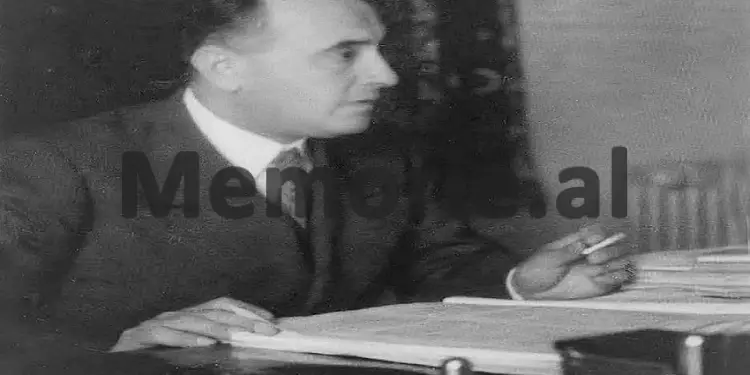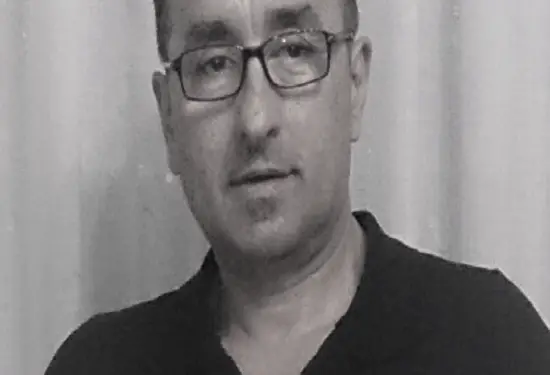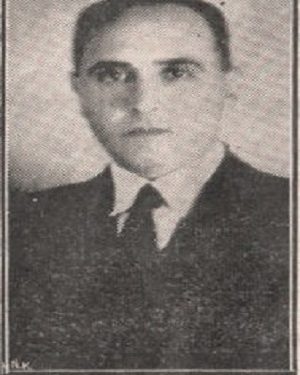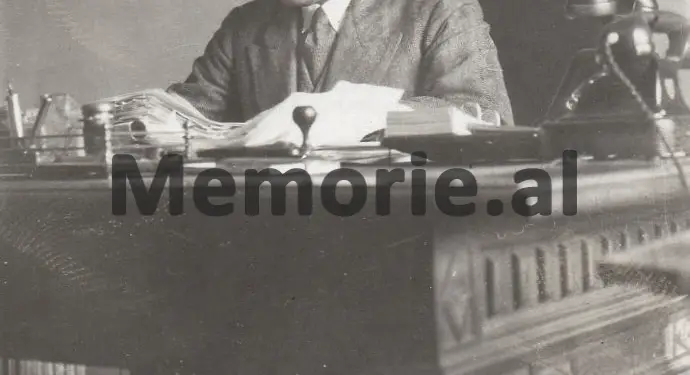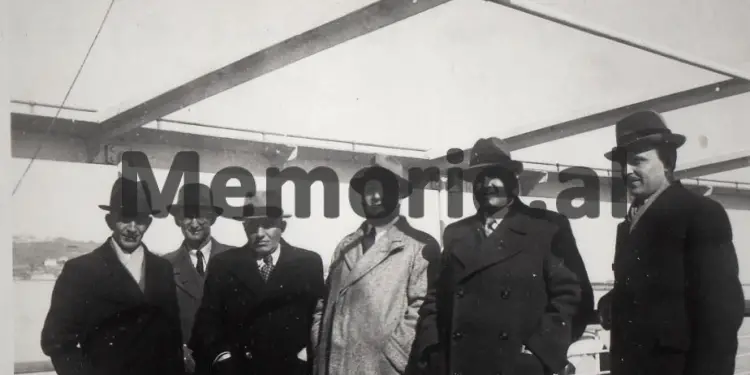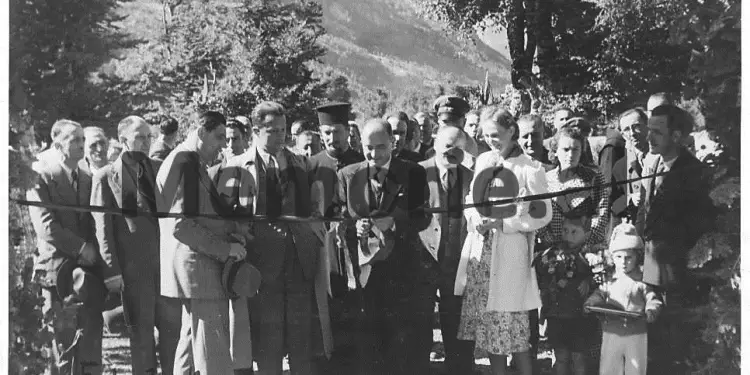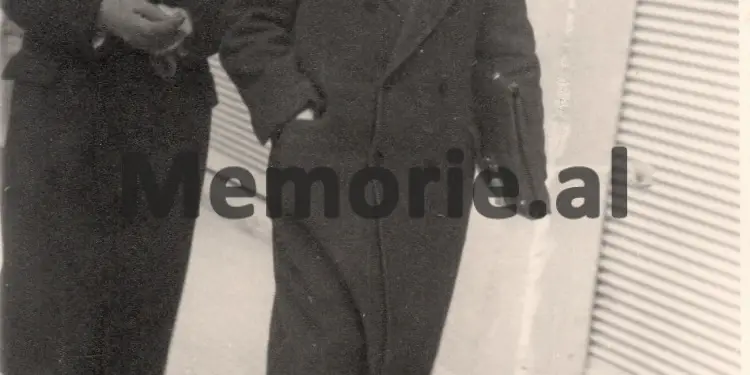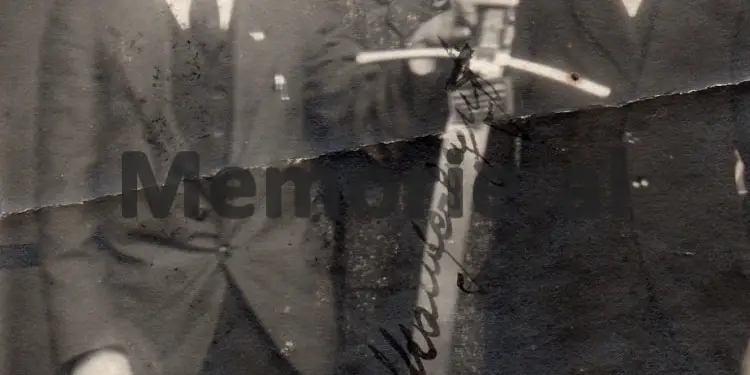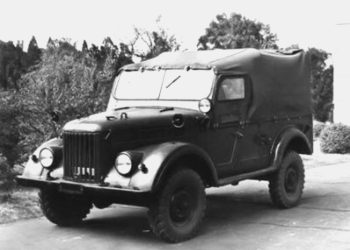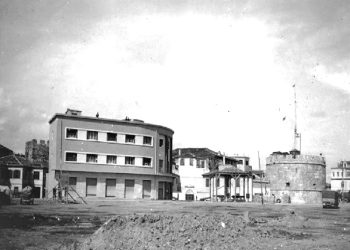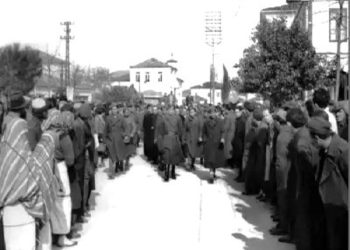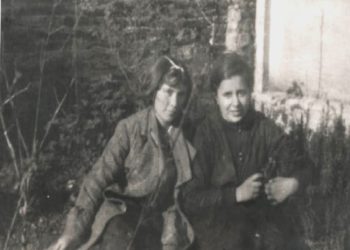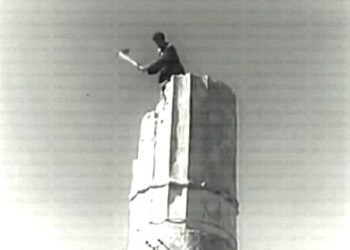By Arben Pustina
Part thirteen
-Rrok Gera, a proper statesman –
FORWARD
Memorie.al / This book aims to convey to the public the image of a perfect man, who lived in other times, but who was the best example, not only of what an ordinary man can represent, but, next first, as an example of a noble, distinguished, omniscient and, above all, honest statesman. Having in his genes the noble virtues of his origin, being formed as a personality in a wonderful environment, such as Shkodra at the beginning of the 20th century, and graduating from one of the most prestigious universities in Europe, such as that of In Vienna, Rrok Gera had all the potential to be one of the important figures who gave rise to a rapid development through comprehensive reforms in Albania in the 30s of the last century.
This development reached its peak with Mehdi Frashër’s government, considered perhaps the best Albanian government of all time, formed for the most part by non-political persons, among who was Rrok Gera. For 10 years, or more, as a minister or in other high state functions, he worked with conviction that he was walking on the right path for the consolidation of the Albanian state, a process for which he said he had no time to lose. Economist, financier, diplomat, lawyer, Gera was a specialist who advanced towards the top with his professionalism in an environment where the old factions, which were almost dominant in politics and governance, lost ground in front of young and educated people good.
Continues from last issue
MINISTER OF NATIONAL ECONOMY IN THE GOVERNMENT OF KOÇO KOTA
At the time when Rrok Gera was in charge of the Ministry of National Economy, the agrarian reform process took a new turn, as one of the main pillars for the development of agriculture. This reform was designed in 1930 and was planned to last for a period of 10 years. Dr. Teodor Kareco, in his article entitled “The Agrarian Reform of 1930 was one of the best”, argues that this reform undertaken in the years of the Kingdom was complete, complex and among the best carried out in Europe.
Kareco emphasizes in his article that the Agrarian Reform law was based on the trinomial: land, capitalist relations through the standard contract and the Agricultural Bank. The creation of the latter in 1937, Kareco assessed as necessary for the realization of the Agrarian Reform in Albania as well as for bringing agriculture out of its backwardness and moving forward. Linking the article of Dr. Karecos, with our elaboration of the activity of the Ministry of National Economy, we note that, as he claimed, the work on agrarian reform was almost never interrupted, until the occupation by Fascist Italy.
As far as we have said, we have an article from the newspaper “Drita”, which commented in its issue of August 13, 1938, exactly the concrete work of the Ministry of Economy to speed up the agrarian reform, when Rrok Gera was at the head of the institution: “… In the Ministry of National Economy, the adoption of a technical work system for speeding up the Agrarian Reform, which is of great importance for the development of the country, is being studied by competent personnel. Studies are also being done to add the Agrarian Reform to the efforts of the economic organization of the state and to act from now on, according to a rational and better systematized plan.
With the creation of the Directorate of State Estates, the mission of Agrarian Reform takes on greater importance, according to the corresponding law of that Directorate, it excludes the installation of immigrants in the state’s manors and it is implied that from now on, they will be installed on the lands that will result from the application of the Agrarian Reform. For this purpose, the special bodies of the Agrarian Reform section at the Ministry of National Economy are developing their activities by measuring land. In order to have an idea of the importance of the application of the Agrarian Reform, you should know that in Albania there are 18,552 proletarian farming [1] families, with 102,893 people and 57,436 farming-owner families with land with less than 5 dynym per person, with a number of souls of 307,707 who expect to benefit from the Agrarian Reform…”.
When we discussed the adoption of the Agricultural Bank law (November 1936), we also mentioned the fact that the director of this bank, Francesco Frigione, had held several meetings with the Minister of National Economy, Rrok Gera, in 1938, as well as had several exchanges of letters where, among other things, the possibility of him preparing a draft law for the establishment of Cooperatives in Albania was also discussed. There is not much data on how it progressed further in this direction, but the magazine “LES BALKANS”, in its column “La vie eqonomique et sociale”, wrote in the fall of 1938 that the Ministry of National Economy had taken the initiative to to encourage the creation of Agricultural Cooperatives in different regions of Albania.
According to the magazine, although the movement for the realization of the project was in its beginnings, five Cooperatives were developing their activity in the country: 1) Agricultural Cooperative of Korça, which aimed to collect and sell agricultural products in general; 2) “Oleum” cooperative of Vlora, for the improvement of olive cultivation and the development of the olive industry; 3) Agricultural Cooperative of Tirana, which provided its members with agricultural tools and machinery, tree seedlings and grains for seed; 4) Cooperative in Elbasan, also for the olive industry; 5) Kavaja Cooperative for the improvement of agriculture in the region.
However, the work in different sectors of the country’s economy required even higher rates of activity and deep interventions, especially in agriculture and animal husbandry, therefore, on November 5, 1938; Rrok Gera presented a justifying report to the Parliament, where he requested an increase in funds of 207,000 gold francs in the extraordinary budget of the 1937-1938 financial exercise of the Ministry of National Economy. Presenting the reasons that led to the request for the budget supplement, Gera argued that funds were needed for the maintenance of farms, temporary nurseries and experimental stations for the development of special agricultural crops, for the maintenance of temporary rice fields, fruit trees and communal olive groves, for grafting, pruning and combating diseases in olives and vines, for the purchase of tools, as well as for the development of the beekeeping economy.
Also, the additional funds had to do with the expropriation of land where silos would be erected in Korçë, Elbasan, Vlorë and Fier (necessary for the preservation of cereals and agricultural products); with the expropriation of 110 hectares of land for the expansion of the agricultural area in Xhafzotaj, in order to provide food for the animals that were in the National Zootechnical Institute, as well as with the purchase of 3,000 quintals of wheat for the farmers’ need to provide selected seeds.
In addition to these, funds were required (I) for the development of zootechnical competitions and exhibitions, (II) for the construction and improvement of breeding stations, (III) for the selection of cattle of the “Shkodra” breed, (IV) for the hatching of several breeding courses aviculture, as well as (V) for the development of poultry breeding and egg production which, for the trade balance of that time, represented an important input. The addition of funds was also needed for the allocation of subsidies for those who built buildings with a livestock character as well as for the shepherds of the Southern stables of the country, in order to encourage the export of livestock production and the preparation of products in accordance with the laws and regulations in force.
With the addition of the requested fund, it was thought to erect two modern centers for the collection and conservation of manure necessary for the improvement of the lands of the Zootechnical Institute, as well as to build two silos for keeping and preserving the food necessary for stallions, damas, cattle and generally for any animal or bird kept or bred at this station for the purpose of selection, testing and breeding.
As we said earlier, an issue of multiple importance’s was the reclamation of swamps. On November 15, 1938, the Minister of National Economy, Gera, issued an ordinance addressed to the reclamation groups of Shkodra, Durrës, Lushnja and Korça, through which he requested the submission in the shortest possible time of detailed reports on the works carried out, or that were in progress, from the relevant groups of reclamation that belonged to the year 1938.
According to the ordinance in question, the report had to contain separately each work and all possible details, such as: type of work, irrigation or drainage canal, length, where it started and where it ended, works of art, etc., the way of performing the works (with forced labor, or entrepreneurship), the agricultural benefit that was expected from the work and what the improved lands could be planted with, how much land was irrigated or drained, the cubic capacity of the excavations, how many workers were engaged in the work, the purpose of the works of art , weirs (dams), etc. The reports of the reclamation groups had to be compiled in cooperation with the district agronomists, who also had to sign these reports.
For the same issue, in the circular dated December 10, 1938, with no. protocol 4.393, sent to the groups of Shkodra, Durrës, Lushnja, Korça, Kurveles, as well as the agricultural offices throughout the country, Rrok Gera noted that he had found many times that the groups in charge of studies for reclamation works, at the end of the work of theirs, they had sent to the Ministry of National Economy only the preventive measure as well as a longitudinal profile, without a technical report and the relevant sketch, thus making it difficult for the Ministry to study the issue from the point of view of its importance, as well as the detailed assessment of the work that had to be done. Therefore, Minister Gera ordered that, in addition to the above, studies with a remedial character should also have other elements, as follows:
“1. The orientation sketch is drawn up mainly freehand where it is indicated the place where the work will be carried out: a) if it is a canal; place of water drying up, quota of water in time of drought, quota in maximum part, plan of channel and place of discharge. b) In the case of raising a retaining dam, indicate the place where the dam will be erected, plan metrically with some supporting details. c) If correction; direction of the river or stream, indicate the place where the correction will be made with the necessary details. 2. In the summary report, indicate the work to be done, for what purpose, the current state and the benefits that can be derived from the work. In cooperation with the agronomist of the district, to note the agricultural profitability as well as to investigate and report the contribution that the farmers can give with the owners of your lands, a regular record was kept on their statements. If the work will be done for the purpose of drying, it must be indicated in the report that the swamp or marsh is State, private, or municipal property and how much land is freed from this drying. Will the land that will be freed be useful later for agricultural land, or will it only benefits from the health point of view by drying it out?”
As for the issue of reclamations, in a justifying report to the Parliament, in February 1939, Minister Gera cited the advantages brought by the relevant draft law, drawn up at that time, which, among other things, encouraged private owners or companies to take the initiative for drying swamps with an area of up to 500 ha. 195 In the articles of the draft law presented to the Parliament, it was clearly defined how to proceed to verify the ownership of the swamps, in cases where there were claims on the part of private individuals. The latter had a three-month deadline for presenting documents before a special commission.
Also, the draft law provided that groups of organized villagers would be favored in the reclamation of swamps, which, after the reclamation, could benefit from land in proportion to the works carried out by them. The draft law also provided that the reclaimed lands given to the peasants who contributed to the reclamation should not exceed the area of 25 dunymas for each worker and not be more than 100 dunymas per house, however large the reclaimed land was. . In the meantime, it was determined that the rest of the reclaimed lands should enter the order of state assets.
Also, it was foreseen that the Ministry of National Economy, for important works and of an urgent nature, could take over the private swamps, before the procedure for the recognition of privacy began. In the fall of 1938, the magazine “LES BALKANS” wrote, in one of its columns, that the Ministry of National Economy in Albania had at that time drawn up a ten-year plan that provided for the gradual improvement of 170,000 hectares of land in nine different areas of the country: Durrës, Elbasan, Berat, Fier, Korçë, Bushat and Saranda.
Undoubtedly, the draft law on reclamations that we mentioned above preceded this process, which was thought to have a great impact on Albanian agriculture, which until those years had a low percentage of cultivated land. During the second half of 1938, in the Ministry of National Economy, serious preparations were made for the participation of Albania, with its products, in the international fairs of Bari and Thessaloniki. It was in that period that preparations began for the New York fair, scheduled to open in the spring of 1939.
For a more dignified representation, a preparatory commission was set up, chaired by Minister Gera himself. At the same time, Rrok Gera did not forget his “old habit” of harassing the Italians in an attempt to get some financing from them for important economic projects. Thus, in a report from the Directorate of the National Bank of Albania, addressed to Amedeo Gambino in Rome, there was talk of a meeting that E. Meliss had with Gera on August 25, 1938.
According to Meliss, in this meeting the Minister of National Economy spoke about the plans of the Albanian government for the construction of a large silo in the Port of Durrës with a capacity of 50,000 square meters, in order to increase the volume of import and export of cereals. For this economically important project, Gera had requested financing from the Italian side. Likewise, in the pages of the magazine “National Economy”, in August 1938, we learn that the Albanian government had meanwhile made the decision to build 5 more silos in the cities of Shkodër, Korçë, Elbasan, Fier and Vlorë, each with a capacity of 10,000 sq., always with the aim of the best storage of grains, but also to avoid the abusive actions of traders.
On October 12, 1938, Gera took part in the inauguration of the Bogë – Theth road, 27 kilometers long, where he cut the ribbon and gave a speech. In front of those present, among who was the great Father Gjergj Fishta, Rrok Gera emphasized that the construction of this road opened perspectives for the development of tourism in this area of rare natural beauty, but also opened the perspective of connection with the area of Valbona until then isolated. On October 31, 1938, Gera took part in another inauguration that of the new Headquarters of the National Bank of Albania, a special building, which with its architecture is still one of the most beautiful buildings in the capital.
In the speech held on this occasion before the government authorities, the diplomatic corps and high representatives of the Italian banks, he emphasized that, when 13 years had passed since its establishment (1925-1938), the National Bank of Albania, with its activity, had known how to overcome every difficulty of a general nature, giving evidence of endurance to break every doubt and increase her confidence in foreign countries. Also, Rrok Gera underlined that the economic balancing had constantly had the necessary support to enable the preservation of its always active state, which in turn enabled the National Bank to reserve such a large amount of gold and gold foreign exchange, that this bank became exemplary in the world for the high coverage of currencies in circulation and deposits with immediate maturity.
For this reason, noted Gera, the Albanian currency was among the most stable on the continent, remaining unaffected by any manipulation or devaluation of foreign currencies. While in the framework of the perspective, Rrok Gera expressed his belief that the government would pave the way for provisions for the development of initiatives, so that agriculture and industry would benefit especially from medium and long-term loans. According to him, this is the only way to achieve the highest mission of the National Bank of Albania, in tutelage and at the same time helping its sisters, becoming the “Bank of Banks”.
In another important event, on the second day of the creation of Radio Tirana, on November 29, 1938, at 19:02, Rrok Gera, Minister of National Economy, was invited for about 15 minutes to the interview (radio conference) of first, realized in the studio of this Radio. Emphasizing the importance of these radio conferences, which the leaders of Radio Tirana had planned to be continuous, he promised in front of the microphone that the Ministry he was leading would make the best use of this opportunity, in order to convey all the information of necessary for the listeners, who until then had no information about the laws in force and about the practical results achieved in the experimental field, which the Ministry of National Economy had developed or was developing. Memorie.al
The next issue follows




